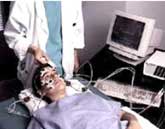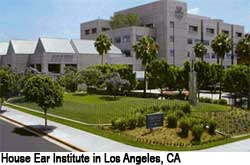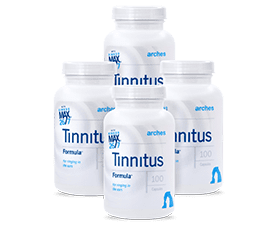By Barry Keate
Barry Keate, has lived with tinnitus over 40 years and has published 150+ research articles on numerous aspects of tinnitus. He is an expert on the condition and a well-known advocate for those with tinnitus.
Biofeedback and neurofeedback are two related therapies that can be helpful in reducing tinnitus sounds for many people. They are based on the principal that, once trained in the technique, we have the ability to influence automatic functions of our bodies that were previously thought to be beyond our control.
We discussed hypnotherapy in a previous article. Here we will discuss biofeedback and its close relative, neurofeedback.
 In both practices the patient is connected to electrodes which pick up sensitive body signals from a variety of sensing instruments. These signals are then fed into a computer which displays visual or sound signals that indicate levels of stress, skin temperature, blood pressure, heart rate or brain waves. The patient is encouraged to vary thoughts and emotions, and correlate them to changes in the display. The computer “feeds-back” the results of the changes in thoughts and emotions. Over a period of a few weeks, the participant learns how to consciously control these body functions.
In both practices the patient is connected to electrodes which pick up sensitive body signals from a variety of sensing instruments. These signals are then fed into a computer which displays visual or sound signals that indicate levels of stress, skin temperature, blood pressure, heart rate or brain waves. The patient is encouraged to vary thoughts and emotions, and correlate them to changes in the display. The computer “feeds-back” the results of the changes in thoughts and emotions. Over a period of a few weeks, the participant learns how to consciously control these body functions.
Biofeedback therapy is used extensively in the treatment of tinnitus. Both the House Ear Institute in Los Angeles, CA and the Tinnitus Clinic at Oregon Health Sciences University in Portland, OR use biofeedback for their tinnitus patients.
 A paper produced by the House Ear Institute states that their tinnitus patients were given 10-12 one-hour biofeedback sessions. They were followed for 6-12 months after the sessions and over half had improved their condition. A few of the patients were dramatically improved while none of them were worse.
A paper produced by the House Ear Institute states that their tinnitus patients were given 10-12 one-hour biofeedback sessions. They were followed for 6-12 months after the sessions and over half had improved their condition. A few of the patients were dramatically improved while none of them were worse.
Another study, conducted at Cornell University, treated seven subjects with chronic tinnitus of moderate to severe intensity with a five month program of weekly biofeedback sessions. The results showed no change in tinnitus loudness but all patients gained satisfaction from the training. Three patients (43%) reported substantial psychological benefits in coping with tinnitus, two (28.5%) described moderate improvement and two (28.5%) experienced modest gains.
 Murray Grossan, MD was among the first to publish the effects of biofeedback on tinnitus management in the 1970’s. He describes a basic biofeedback treatment that can be practiced at home in a few minutes. He has noted good success in his tinnitus patients using this method.
Murray Grossan, MD was among the first to publish the effects of biofeedback on tinnitus management in the 1970’s. He describes a basic biofeedback treatment that can be practiced at home in a few minutes. He has noted good success in his tinnitus patients using this method.
Normally, when someone tells us to relax, it doesn’t mean anything as we have nothing to compare with. Dr. Grossan tells tinnitus patients to stand in front of a mirror and watch their face relax. The reflection will show us the difference between the relaxed state and normal.
Breathe in for 4 seconds and out for 6 seconds. Absolute timing is not as important as making sure the exhale is longer than the inhale. Allow your face to totally relax and your jaw to drop open. Practice this for 10 minutes twice weekly until you feel you are relaxing deeper and it is easier to do. After the initial period practice this for one minute every hour for 2-4 weeks. Your tinnitus should improve.
Dr. Grossan claims it is beneficial for TMJ patients also. People with TMJ open their jaw sideways. He instructs them to draw a line up and down on the mirror. As your jaw relaxes and opens, make sure it falls in a straight line.
Biofeedback has been practiced for much longer than neurofeedback and there are 40 years of data to support its use for many conditions. For example, a person can be trained to raise the temperature of one hand five to ten degrees higher than the other hand. Even animals can be trained. In one experiment researchers trained a laboratory rat to produce a temperature differential between its two ears in order to receive a food reward.
This may seem like science fiction nonsense but it actually has a practical application. When people trained in biofeedback cause their hands to quickly become warmer than normal, this can effectively short-circuit a migraine headache. The blood which normally engorges the blood vessels of the head in migraine is diverted to the hands and arms which effectively removes the headache. In cases of pure migraine people can be taught this technique in a week or two. However, the majority of migraine sufferers also have chronic tension that must be treated over a longer period of time with biofeedback relaxation techniques.
There are three primary measuring techniques used in biofeedback; electromyogram (EMG), temperature and galvanic skin response (GSR).
The electromyogram (EMG) measures muscle tension. Two electrodes are placed over the muscle to be monitored. The most commonly used muscles are the frontalis (the “frowning” muscle in your forehead), the masseter (jaw muscle) and the trapezium (the shoulder muscles that hunch when you’re stressed). When the electrodes pick up on muscle tension, the machine gives a signal such as a colored light or sound. In this way you can see or hear continuous monitoring of your muscle activity. As you become more aware of this internal process, you will begin to recognize in your daily life when tension starts to build. You can then use the techniques learned in biofeedback training to control the tension before it gets worse or causes other physical problems.
EMG has been successfully used for the treatment of tension headaches, backache, neck pain and tinnitus as well as for the stress related illnesses such as asthma and ulcers.
Temperature biofeedback monitors skin temperature and can be helpful in certain circulatory disorders. Usually, a sensor is attached to the foot or the middle or small finger of the dominant hand. When you are tense or anxious, your skin temperature drops as blood is redirected inward to muscles and internal organs.
Like muscle tension, measuring skin temperature is a useful tool in learning how to manage stress. Other biofeedback instruments can monitor heart rate and blood pressure.
Galvanic skin response (GSR) is also sometimes known as electrodermal response (EDR). It measure electrical conductance in the skin which is associated with the activity of the sweat glands. The more emotionally aroused you are, the more active your sweat glands are and the greater the electrical conductivity of your skin. GSR is effective in treating phobias, anxiety, excessive sweating and sometimes stuttering. It is also used as a lie detector test.
Biofeedback sessions usually last thirty to sixty minutes each. The duration of treatment depends on the condition but generally is limited to about 15 sessions. Biofeedback is more effective if it is combined with relaxation techniques, hypnotherapy and psychotherapy.
 Neurofeedback is a more recent development using some of the same principles as in biofeedback. Instead of sensing and displaying physical characteristics of the body, neurofeedback monitors brain waves. Neurofeedback utilizes an electroencephalogram (EEG) machine in which electrodes are attached to the patients’ unshaved scalp. The brain emits many electrical signals of various frequencies. Only a few of these have been directly tied to specific disorders or mental states. The main categories of brain waves are:
Neurofeedback is a more recent development using some of the same principles as in biofeedback. Instead of sensing and displaying physical characteristics of the body, neurofeedback monitors brain waves. Neurofeedback utilizes an electroencephalogram (EEG) machine in which electrodes are attached to the patients’ unshaved scalp. The brain emits many electrical signals of various frequencies. Only a few of these have been directly tied to specific disorders or mental states. The main categories of brain waves are:
Beta (awake)
Alpha (calm relaxation)
Theta (light sleep)
Delta (deep sleep)
A common and well-documented use of neurofeedback is for the treatment of attention deficit hyperactivity disorder (ADHD). By reducing theta waves and increasing alpha waves, children with this disorder are able to increase their attentiveness.
Another application is for the treatment of epilepsy. A German study published in the April, 1999 journal Clinical Neurophysiology found that two thirds of epilepsy patients could reduce their seizure rate by learning to control very low frequency brain waves in the cortex. As we discussed in a prior issue, Hippocrates, known as the “Father of Medicine” stated 2500 years ago that “Tinnitus is the little brother of epilepsy.” This is why many of the same medications and therapies that help epileptics are also beneficial for people with tinnitus.
In a recent German study on 40 patients with tinnitus, 24 patients were treated with neurofeedback for one year while 16 patients in a control group were untreated. The 24 patients were trained to increase the amplitude of their alpha activity and decrease the amplitude of their beta activity during muscle relaxation and music therapy. At the end of the study, all treated patients had a significant reduction of the score in the Tinnitus Handicap Inventory. This is the standard questionnaire that describes the degree of disturbance of the patient due to tinnitus. The control group had no change in their THI scores.
There are biofeedback centers in every major city in the United States and they are generally listed in the telephone directory. There are fewer neurofeedback centers. They can generally be found by referral from the Neurology department of your local hospital.
Get Free Shipping!
Order now and get free shipping on either the Tinnitus Starter Kit or Combo Pack. Try the doctor recommended products with clinically proven ingredients for tinnitus. No coupon code required.

